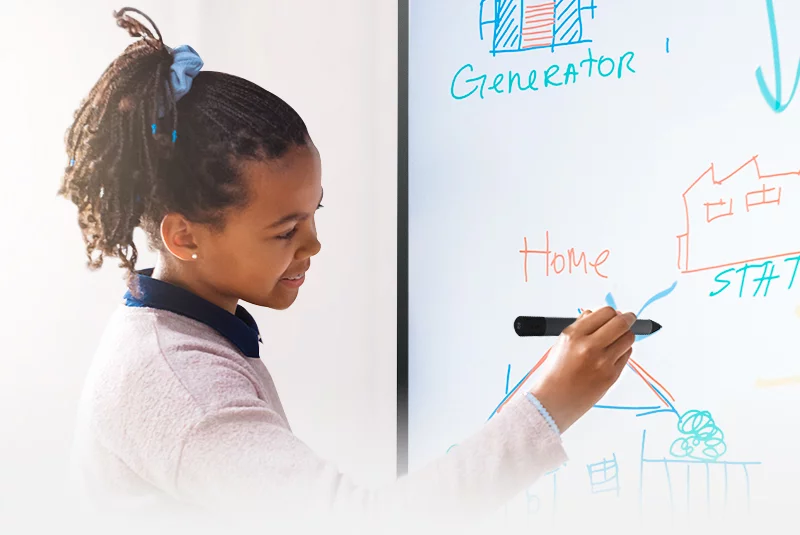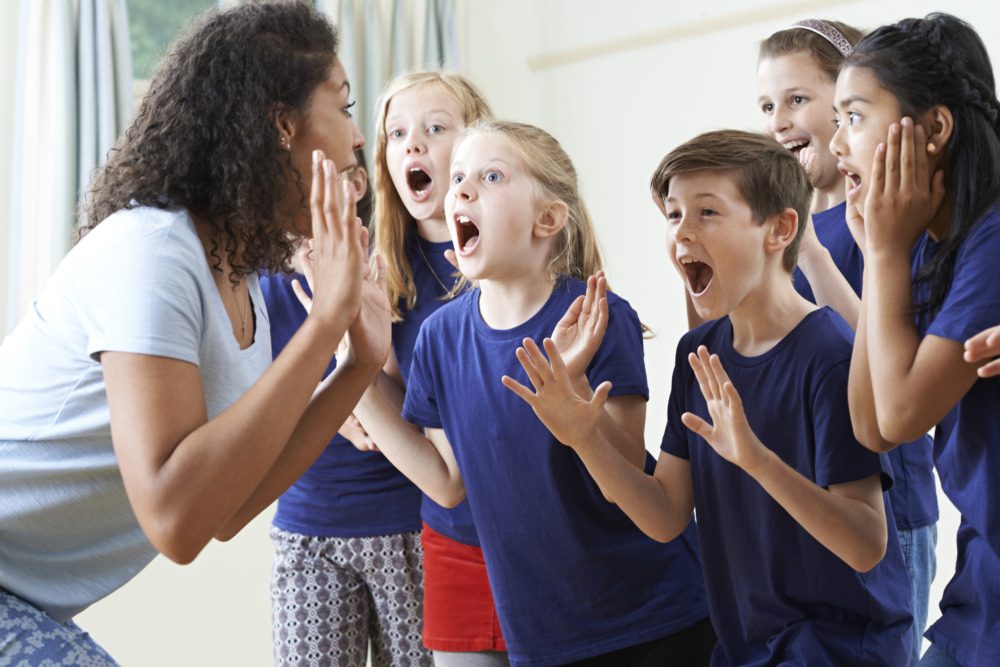How Interactive Whiteboards Help Children Learn
When many of us grew up, having a white board with colorful markers seemed part of an exciting wave of innovation. No more dusty erasers! Now those are giving way to interactive whiteboards.
These fantastic teaching tools help children learn in many ways:
Interactive White Boards Allow for More Interaction and Customization
Each lesson, teachers can prepare slides, similar to a PowerPoint presentation. However, the software for interactive whiteboards allows teachers and students to annotate what has been written directly onto the screen. For example, if a teacher wants the whole class to solve a math problem, the equation can be typed by the teacher on a slide. Then in class, a student (or group) can go up to the screen and work on solving it using a special inkless “pen”. If there is a mistake, the student can erase it. Unlike an overhead projector, the screen projection can be very large and there is no fumbling around with strange angles. If something is erased by mistake, there is an easy “undo” button that can simply be clicked. If teachers would like to use a hardcopy of a student’s work as an example, they can simply print it out.
Teachers Can Transition Seamlessly Between Topics
The slides can be created and saved by topic for a day, a week, or an entire unit: it’s all up to the educator. If a child misses a day of class, all the teacher needs to do is print out the slides and provide some additional notations. When students struggle with a concept, it is easy to go back over previous slides to make certain that they understood the previous material. Having an interactive whiteboard allows teachers greater organization techniques that everyone will be grateful for.
Objectives Can Easily Be Incorporated into Slides
In a classroom pressed for space, it can be hard to find additional areas to present the day’s objectives amidst the artwork, student work, calendars, and weekly schedules. However with an interactive whiteboard, teachers can post the lesson’s objectives anywhere on the slide. For example, the phrase “analyze the descriptive language in a poem” could be placed on all slides pertaining to that lesson, so that students remember the ultimate objective. This, in turn, will help students develop metacognitive skills so that they are aware of their own academic skills as they develop them.
Links Can Be Integrated into Slides
Today, there is so much supplemental educational material available on the internet, it’s extremely helpful if educators have an efficient way to share it with their students. Whether it’s a video of an inspiring speech or of penguins protecting their eggs, teachers can link to it directly through a word or picture. There is no time lost running over to a computer.
Teachers Can Control Boards from Anywhere in the Classroom
With a special remote accessory, teachers may walk around the classroom as students work while simultaneously annotating the slides and progressing through the lesson. This tool provides teachers with the ability to look at student work to ensure that students are indeed internalizing what is being taught. Furthermore, it allows teachers the ability to manage the whole classroom and see that everybody is on task.
Allows for Interactive Games and Activities
Teachers can create slides that allow students to click on possible answers during review games. This demonstrates if children have learned the material, and allows students to have fun going over what they have learned. Once teachers learn the different functions the software allows, the possibilities seem endless. Students enjoy going up to the board to work, and teachers can keep these games or amend them in the future. Younger students can also problem solve with puzzles and so much more. The possibilities are endless!
Interactive Whiteboards Can be Mobile
Schools can purchase mobile boards that move from room to room. Not every school has teachers fixed in permanent rooms, but there is no reason why technology can’t adapt to meet their needs. As long as the software is on a teacher’s computer, they can use any interactive whiteboard for any lesson.
Interactive whiteboards are, without a doubt, a great feature for a school to have. Students will have more exposure to technology, which is essential in our ever-changing technological world, feel more connected to the material, and teachers can feel better organized with their lesson plans.
If you have any questions about our teaching methodology at Tessa International School, please contact us.































